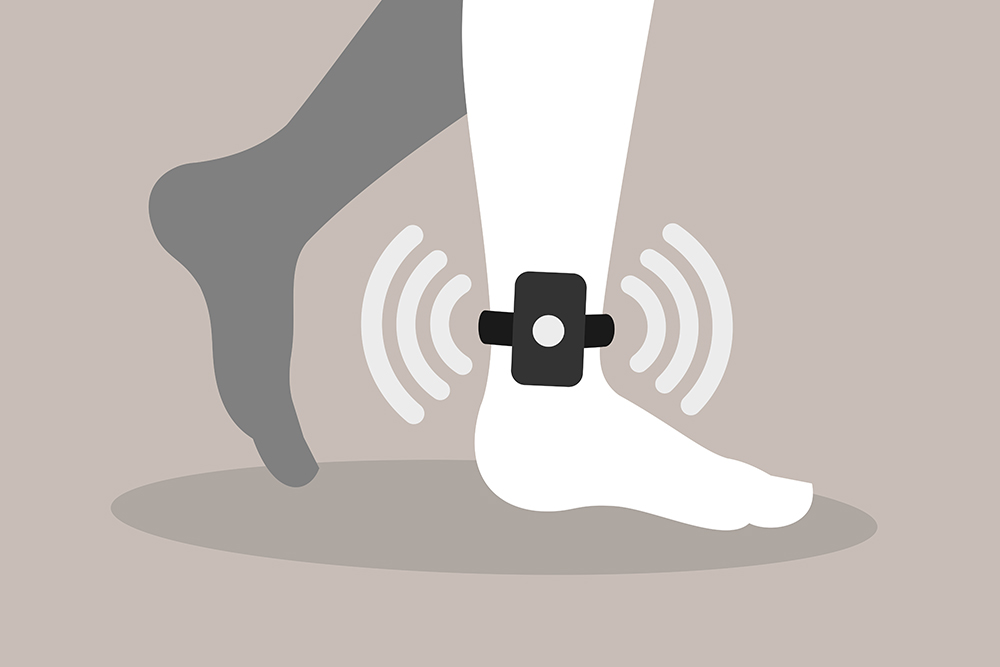![]() In the 1960s, when electronic monitoring (EM) was developed by Robert and Kirk Gable at Harvard University, Robert Gable says they envisioned it as a way to monitor juvenile offenders and “to give rewards to [them] when they were where they were supposed to be … in a drug treatment session, or … school or a job.” Today, the use of electronic monitoring for justice-involved young people has devolved from its original intent as a motivational tool to become a form of constructive incarceration, with few if any links to the promotion of prosocial behavior.
In the 1960s, when electronic monitoring (EM) was developed by Robert and Kirk Gable at Harvard University, Robert Gable says they envisioned it as a way to monitor juvenile offenders and “to give rewards to [them] when they were where they were supposed to be … in a drug treatment session, or … school or a job.” Today, the use of electronic monitoring for justice-involved young people has devolved from its original intent as a motivational tool to become a form of constructive incarceration, with few if any links to the promotion of prosocial behavior.

Marie Williams
Further, electronic monitoring stigmatizes young people and impedes meaningful, supportive relationships with a positive peer group. In fact, given what we now know about positive youth development, there is serious doubt that an electronic monitoring device strapped to the body of a child can be anything other than a detriment to rebuilding their lives after coming into contact with the legal system. In many jurisdictions, electronic monitoring is used solely to surveil and sanction children, drawing them deeper into justice system involvement.
As the pendulum swung toward draconian criminal and juvenile justice measures in the late 1980s and ’90s, and jurisdictions faced the challenges of overcrowding in juvenile and adult facilities, the use of electronic or global positioning system (GPS) monitoring increased. GPS allows authorities to track the whereabouts of young people through a wearable device (most frequently attached to the ankle) that communicates with a central monitoring system. If the transmitter alerts the central monitoring system, it could mean that the signal was interrupted (either inadvertently or intentionally), or the young person has moved out of permissible range. This could be a violation that would result in them being sanctioned, or having their community supervision status revoked.
Electronic monitoring became popularized also because it can be used at virtually all stages of the justice process; pre-adjudication for youth awaiting a court appearance, post-adjudication as an alternative to confinement (or as part of a sentence of home detention) and after a period of out-of-home placement when a young person is being stepped down to a less restrictive form of custody and control.
Proponents point to three main reasons that, they believe, make the use of EM good practice: 1) the cost savings to taxpayers as compared to the cost of incarceration, 2) the relatively lower rates of recidivism as compared to incarceration and 3) the opportunity it affords young people to remain in, or reintegrate into their homes and communities. In fact, all three of those reasons are easily challenged.
EM burdens young people, families economically
While it is true that electronic monitoring is far less expensive for jurisdictions than detention (monitoring young people through GPS can cost as little as $5 per day per device, whereas detention can cost more than $300 per day), there are other costs that this comparison does not consider. Many juvenile justice systems simply pass the cost of electronic monitoring on to the young person and their family, making them financially responsible for installation, phone lines associated with monitoring the device and surcharges for the use or destruction of the equipment.
Families who are unable to assume responsibility for these costs will either become indebted to the jurisdiction or be excluded altogether from the “privilege” of electronic monitoring over incarceration. The transfer of costs to young people and families does not make EM cheaper. It simply hides the cost in a place where it may remain largely undetected by state and local appropriators, and makes incarceration more likely for youth and families who are unable to pay.
EM’s effects on recidivism are unclear
For more information on Evidence-Based Practices, go to JJIE Resource Hub | Evidence-Based Practices
One of the assumptions most often made about electronic monitoring is that it prevents reoffending. At first blush this would seem to make good common sense. If a person is aware they are being monitored, the reasoning goes, then they are less likely to reoffend.
In fact, there is limited reliable research that bears this out in general, and the research about electronic monitoring of juveniles is particularly paltry. In one study looking at reoffending rates after six months, young people participating in intensive supervision programs with electronic monitoring did not fare better than youths participating in intensive supervision programs without electronic monitoring.
A more recent study seemed to indicate that EM reduced failures to comply by 31 percent, but acknowledged that the majority of participants were adults. Further, since many jurisdictions tend to restrict electronic monitoring to lower-risk youth, there is an argument to be made that the likelihood of lower recidivism is simply a characteristic of the population.
EM stigmatizes young people
Despite there being no evidence to support this claim, one popular urban myth about electronic monitoring is that young people who are subjected to it wear their ankle bracelets as a badge of honor. In fact, in one 2010 study conducted in three upstate New York counties, 64 percent of young people who failed to comply with their electronic monitoring conditions had cut them off.
Wearing an electronic monitoring device to school, for instance, is almost certain to provoke implicit or explicit bias by teachers and peers who will expect and project bad behavior onto those children. The implication of an ankle bracelet is that the child is a physical danger to the community and those around them, such that the state must be aware of their location at all times. In fact, most children are placed on electronic monitoring for common adolescent misbehavior, or failure to comply, rather than new delinquent acts.
Some of what the new developmental science tells us about young people — that they are highly susceptible to peer influences, impulsive, have fluidity of identity and try on different values — indicates that electronic monitoring could do much more harm than good. Just as we should be encouraging young people to eschew antisocial behavior, we visibly label them as antisocial to their peers and community.
Just as we should be helping them rebuild their lives, we create hurdles to their success by implementing a system focused solely on surveillance and sanctions. Electronic monitoring is neither effective nor humane if — in the pursuit of rehabilitation — it shackles young people to the mistakes of their past, rather than creating a bridge to a brighter future.
Marie N. Williams, J.D., is senior program officer at the Stoneleigh Foundation. Before that she was immediate past executive director of the Coalition for Juvenile Justice and a longtime advocate for social justice causes.

